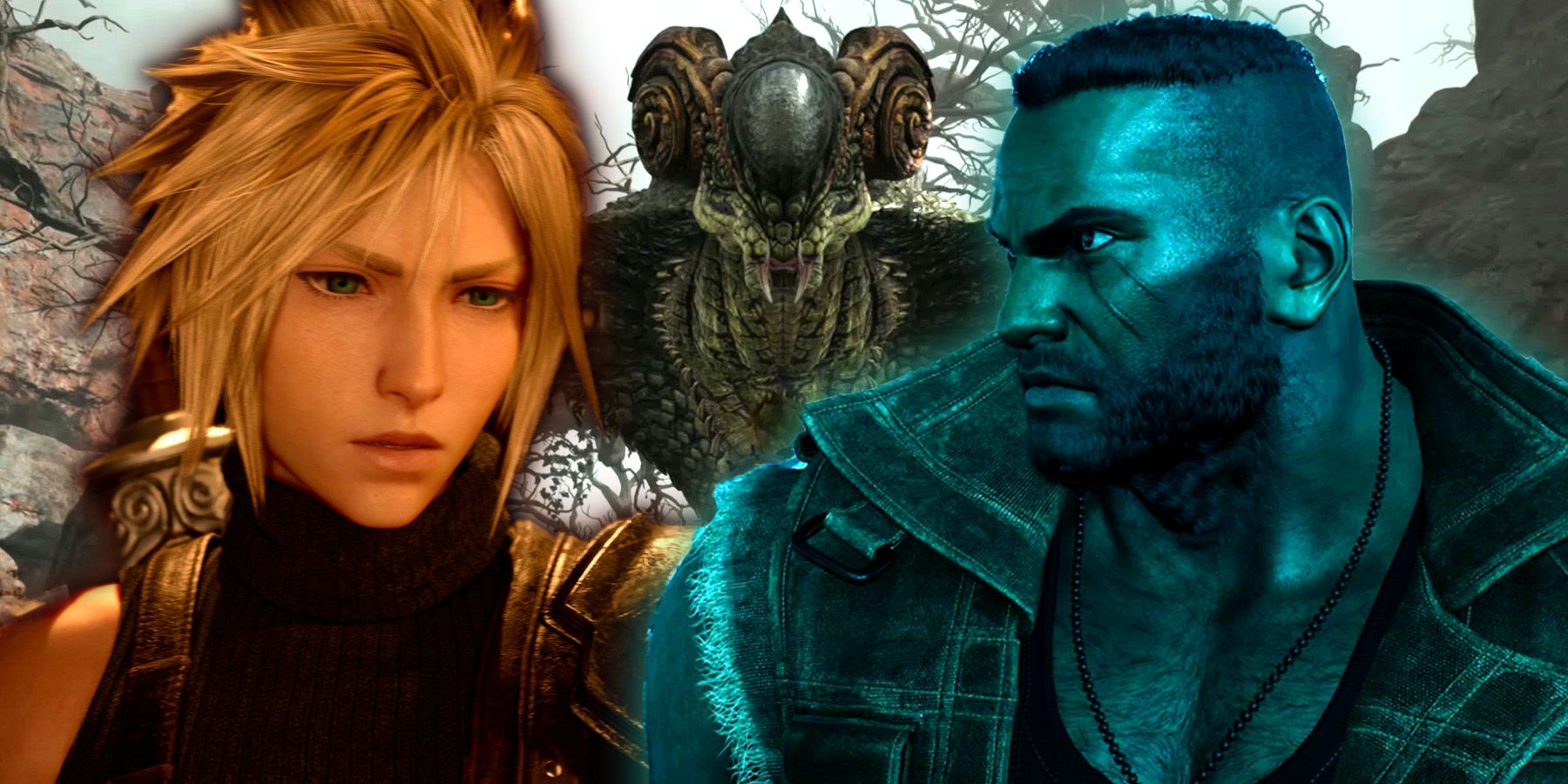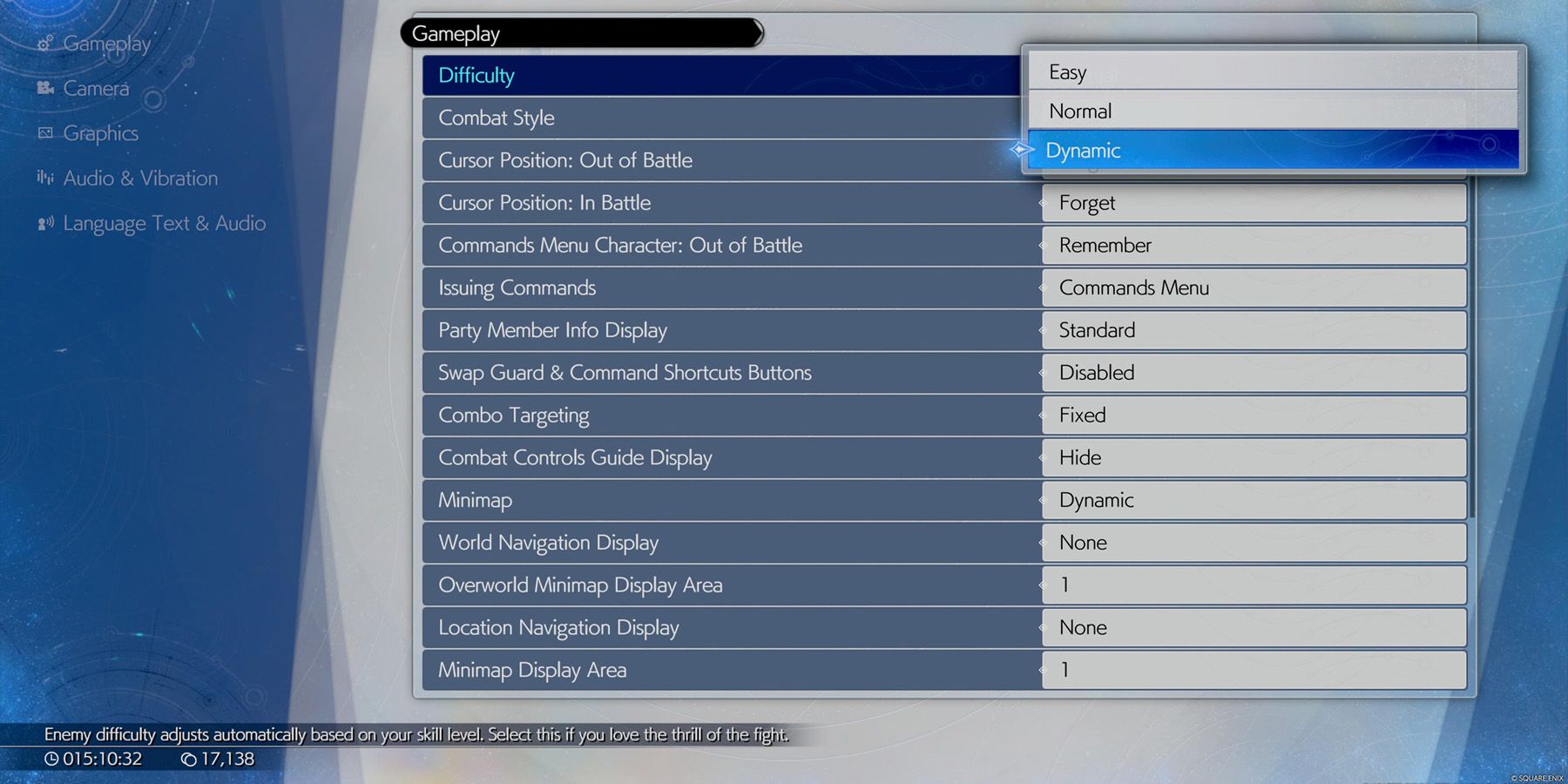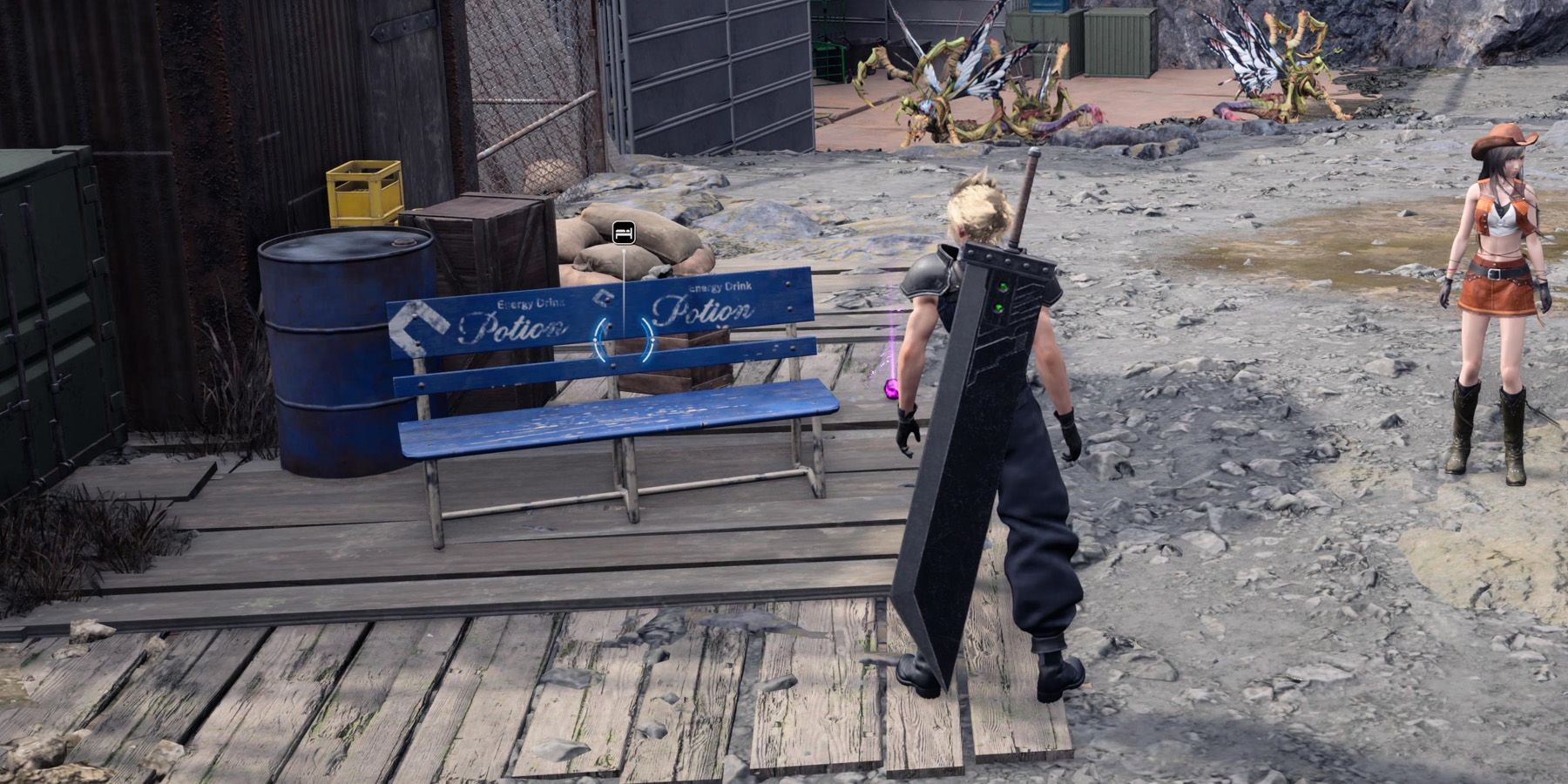Summary
-
FF7 Rebirth
introduces Dynamic mode to adjust enemy difficulty based on skill level. - Dynamic mode is useful to prevent overleveling in an open-world game with plenty of activities.
- Normal & Hard modes in
FF7 Rebirth
respectively offer a standard gameplay experience and a challenging New Game Plus.
Dynamic difficulty is a newly introduced feature in Final Fantasy 7 Rebirth, and it could be the right fit for anyone who isn’t too enthused by the other options. Although most games in the Final Fantasy series were originally released without difficulty settings, the FF7 remake trilogy is far from the first time that the franchise has experimented with options. Final Fantasy Origins added an Easy mode to the first couple of games, for example, and it’s become a more consistent inclusion from Final Fantasy 13 onward.
FF7 Rebirth follows a precedent set by FF7 Remake by including Easy, Normal, and Hard modes, with the latter being unlocked after beating the final boss and completing the game on a lesser difficulty setting. For anyone who played Remake, sticking with the same choice might seem like the obvious move, but it isn’t actually that simple. The challenge found in each game doesn’t necessarily correspond in a very direct way, and looking at other options could actually make it possible to have a better time in FF7 Rebirth.
FF7 Rebirth’s Map Compared To The Original Final Fantasy 7’s Gaia
Final Fantasy 7 Rebirth takes on the daunting task of updating Gaia for modern systems, and the differences in its map reveal some key changes.
What FF7 Rebirth’s Dynamic Difficulty Setting Does
Final Fantasy 7 Rebirth makes it possible to select between Easy, Normal, and Dynamic difficulties at the beginning of the game. Each features a basic description, which does a reasonable job of setting up their basic properties. Dynamic gets the general idea of what it does but leaves some key details to the imagination.
Enemy difficulty adjusts automatically based on your skill level. Select this if you love the thrill of the fight.
Responsive difficulty adjustment has been an increasingly popular idea for video games, so it’s easy to wonder if Dynamic is responding on the level of each battle to adjust the challenge up and down as necessary. The actual function seems simpler, however. Dynamic mode appears to scale fights to the appropriate level for the party, making it possible to maintain the difficulty of the game even when getting ahead of the intended level curve.
Why Dynamic Mode Can Be Useful In FF7 Rebirth
Although it might seem like an unnecessary addition to the FF7 Rebirth options, it doesn’t always take long for Dynamic mode to start looking like an appealing way to play the game. The open-world scale of FF7 Rebirth introduces many more ways to level than were available in Remake, which can be both a good and bad thing. A tour through the side content in the first area of the Grasslands quickly makes it clear that completing them all will put the party ahead of the recommended level for the main story quests.
Since FF7 Rebirth doesn’t include any option to hold extra XP rather than immediately leveling up (a feature available in the similarly large-scale Xenoblade Chronicles RPGs), Dynamic is the best bet to take care of an over-leveling problem. This way, fights that are intended to be challenging should still retain the same level of threat even with some extra levels in the bank. It’s not a choice that everyone will love, but it’s definitely a nice addition for the right kind of player.
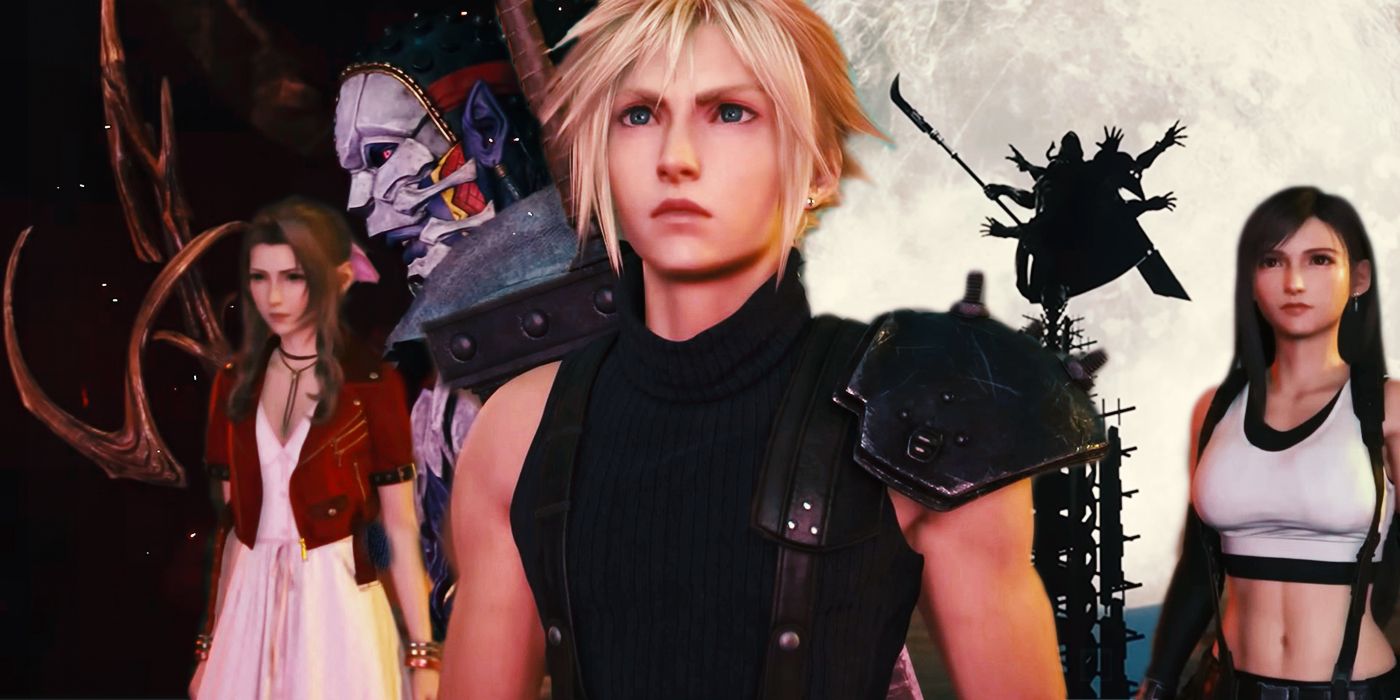

FF7 Rebirth Review: “A Beautiful Showcase Of A Timeless Story”
FF7 Rebirth is an exceptional return to the world of Gaia that leans heavily into its star-studded memorable cast and a classic-but-reimagined story,
The obvious downside of Dynamic comes for those who like to power up through grinding, as turning it on will essentially render grinding pointless. It’s a very different experience from the classic RPG standard, bringing it closer in line to games where leveling isn’t on the table at all (although it does interestingly echo Final Fantasy 8‘s unusual approach). It’s likely to match the basic difficulty curve of FF7 Remake better than any other option in Rebirth, however, so it might be the most seamless transition despite being a new introduction.
How Normal & Hard Modes Are Different In FF7 Rebirth
The other FF7 Rebirth difficulty options work in a more familiar way, setting one standard that remains consistent across the course of the game. Easy mode will mostly make battles go by much faster by requiring a lot less of the standard chewing through enemy HP. Normal mode offers a standard balance for any party that’s staying on track with the indicated level for quests.
Hard mode is more complex than just increasing enemy health or firepower, so it’s not surprising that it’s locked behind completing another difficulty setting first, even if it can still be a frustrating decision. It essentially works as an FF7 Rebirth New Game Plus mode, and it’s balanced in a way that assumes players are coming in with powerful materia and skills already. Hard mode can be accessed through the chapter select menu after completion, and continuing through each level through chapter select will maintain progress throughout.
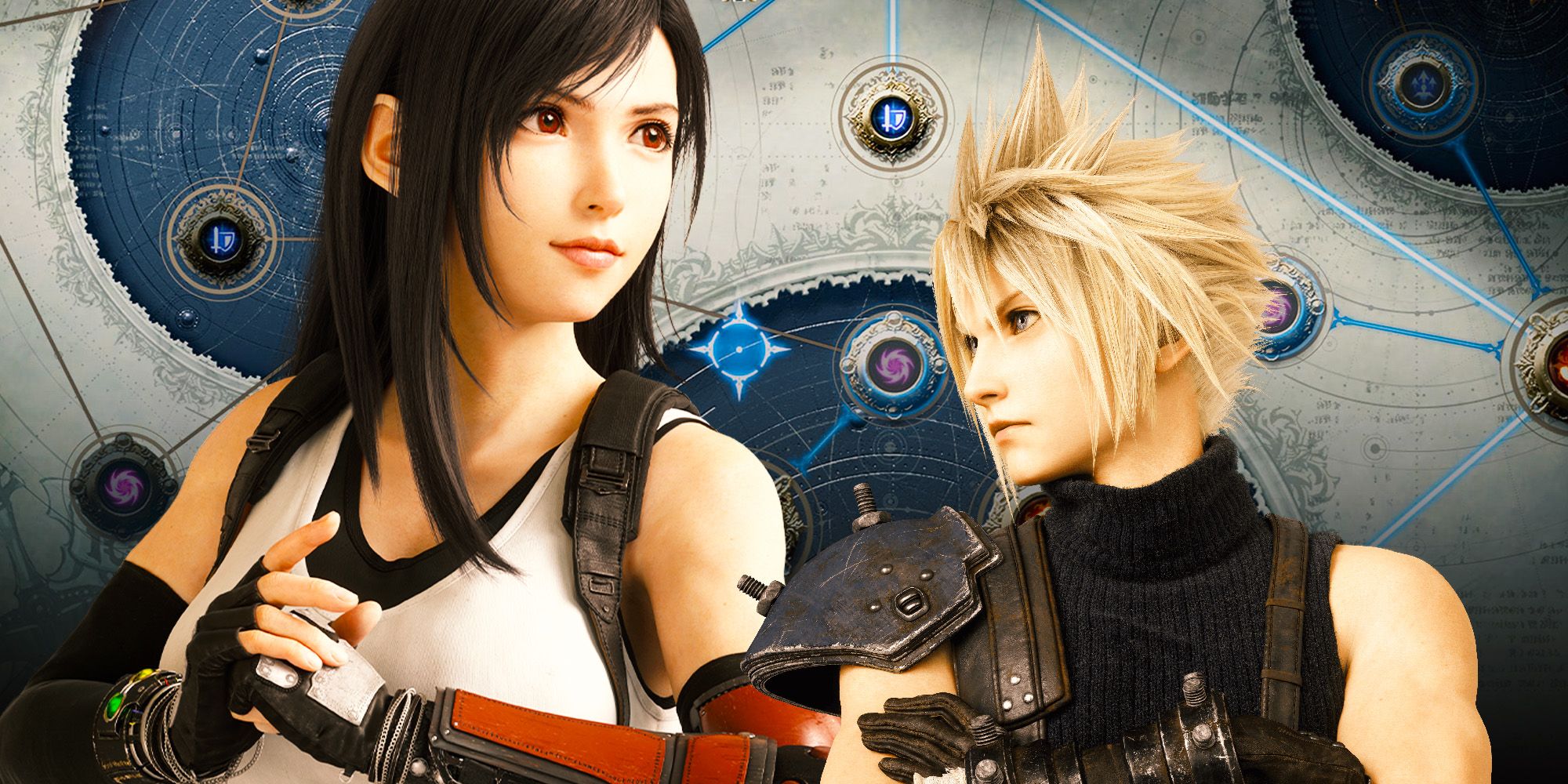

FF7 Rebirth: How To Unlock Skill Cores
The new Folio Skill Trees allows players to customize Skill Cores in Final Fantasy 7 Rebirth and build their party members to suit their play style.
The biggest differences in FF7 Rebirth’s hard mode come from the removal of item use and the ability to recover MP at rest stops (HP can still be recovered). These changes make spells and health into significantly more precious resources, necessitating more complex strategizing and efficient use of equipment and combat options to prevail. It isn’t for the faint of heart, but it can be a rewarding way to replay the experience and put all of the knowledge gained from an initial playthrough into use.
Focusing on materia and equipment that can increase MP availability and recovery can be especially useful when playing
FF7 Rebirth
on Hard.
Any FF7 Rebirth difficulty setting could be the right choice for the right player, but Normal and Dynamic offer the most balanced ways to take on its challenges. Although the irrelevance of leveling can feel strange on Dynamic, focusing on optimizing loadouts and making good use of skills and materia can still reward effort and progression. Difficulty settings can be changed at any time from the Gameplay menu under options, so Easy, Normal, and Dynamic all remain accessible options throughout the course of Final Fantasy 7 Rebirth.
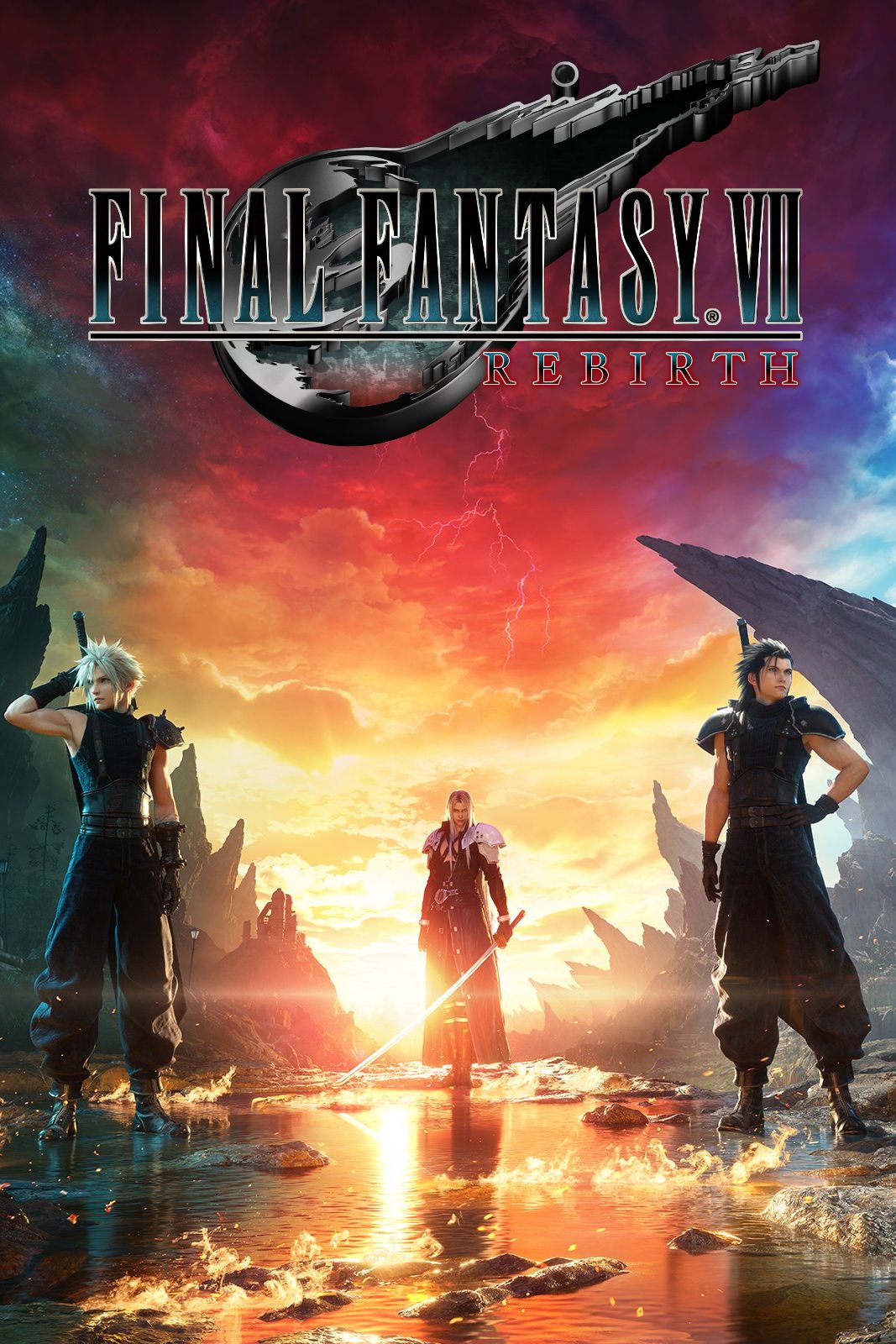

Final Fantasy 7 Rebirth
- Franchise
- Final Fantasy 7
- Released
- February 29, 2024
- Developer(s)
- Square Enix Business Division 1
- Genre(s)
- Action RPG , Adventure
- Engine
- Unreal Engine 4
This story originally appeared on Screenrant

